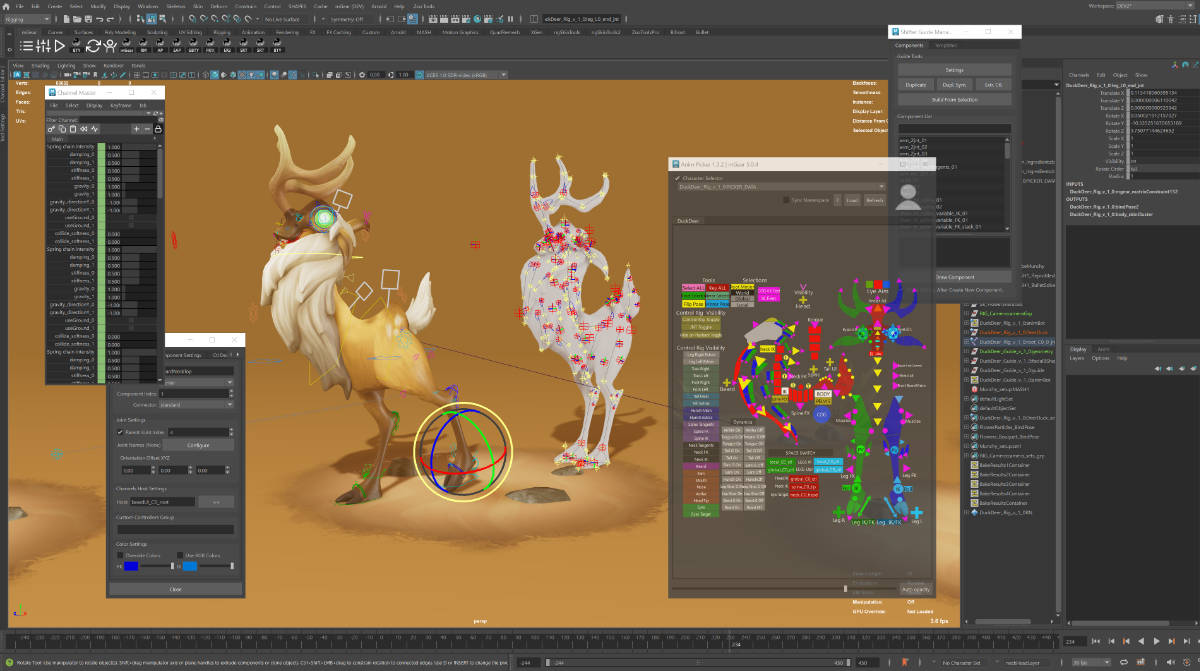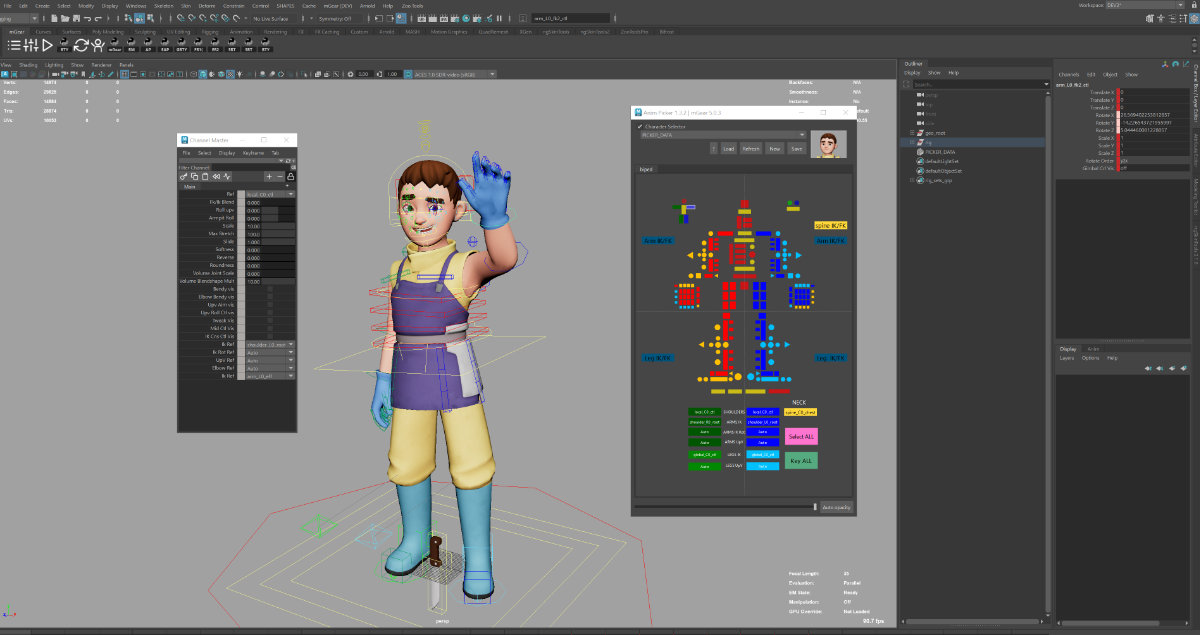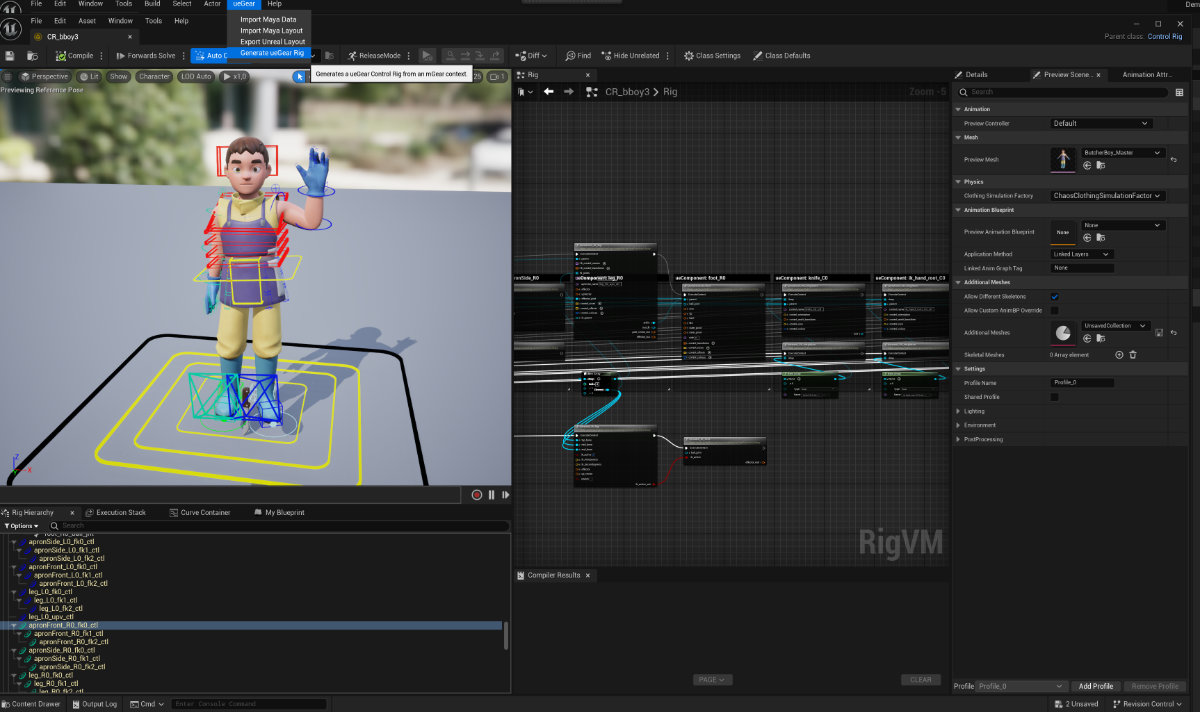mGear & ueGear Framework
Open source rigging and animation framework for Autodesk Maya and Unreal Engine

Community
For general user questions, free support, bug reports, and feedback, please visit our Community Forum, lead by our awesome community manager Chris Lesage
Documentation
Explore detailed API documentation with practical examples to help you integrate and extend mGear and ueGear efficiently.
Free Download
mGear is completely free and open-source. However, your support can make a difference elsewhere. Please consider donating to Médecins du Monde.
mGear Ecosystem
The mGear Framework is an open-source rigging and animation solution that includes both mGear for Maya and ueGear for Unreal Engine. mGear for Maya provides a suite of tools, including the modular rigging system Shifter, Anim Picker, and RBF Manager, among others, while also offering a core set of Python libraries to develop and expand new tools. ueGear serves as its Unreal Engine counterpart, enabling seamless integration between Maya and Unreal Engine through automated rigging, asset synchronization, and animation transfer.


mGear is an open-source rigging framework for Autodesk Maya, developed by mcsGear with contributions from a passionate community of artists and technical developers. Designed to streamline character creation for games, and animation, it offers a modular rigging system, automation tools, and extensive customization options, reducing production time and technical overhead.

ueGear is a powerful bridge between Autodesk Maya and Unreal Engine, enabling seamless asset and animation transfer. By automatically generating rigs in Control Rig, synchronizing assets, and facilitating camera data exchange, ueGear enhances real-time production workflows, ensuring consistent, high-quality results across animation and game development pipelines.

Testimonials
See what people have to say about mGear
Pete Addington
Head of CG at The Line
Simply put, it’s the best modular rigging system out there!
The rig components are intelligently conceived to allow anything from a simple FK articulation rig, to a fully featured production rig. The fact that this codebase is Open Source is a gift to the 3d community, and one that we should all be truly thankful for.
Jeremie Passerin
Lead Technical Animator at Epic Games
Solid production tool
“Miquel did an amazing job making mGear a solid Production tool. I am delighted to see it running smoothly in Maya. Softimage User will be delighted to find their favorite Rig Builder in Maya. Maya user will be amazed how MGear is solid and flexible. Gear has been used in production all around the world since 2010 and changed the life of many riggers and animators, I have no doubt that mGear will have the same success. Do I need to mention it’s free and open source ?”
About mGear
mGear, originally created by Jérémie Passerin and later continued by Miquel Campos, has grown thanks to contributions from many developers. Today, mcsGear, Miquel Campos’ company, leads the development of both mGear and ueGear, keeping them free and open-source under the MIT license.
While mGear thrives on community contributions, its ongoing innovation relies on funding from mcsGear’s services, including consulting, custom development, and training. Supporting these services helps sustain and expand the mGear ecosystem.
Frequently Asked Questions
Is mGear free?
Yes! mGear is completely free and open-source under the MIT license.
However, while community contributions help, the majority of development is funded and driven by mcsGear. If you’re using mGear in production, consider hiring mcsGear’s premium services to support its continued development. 😉
Can I sell rigs made with mGear?
Absolutely! You are free to sell and distribute your rigs as you like.
Where can I get support?
For free support, please use the community forum. Lead by our awesome community manager Chris Lesage
For premium support and consulting tailored to your studio’s needs, contact mcsGear.
Can I use mGear for game development?
Yes! Many game studios use mGear for real-time character rigging, and it can be integrated into Unreal Engine and Unity pipelines. The new ueGear tool helps bridge the gap between mGear and Unreal Engine.
